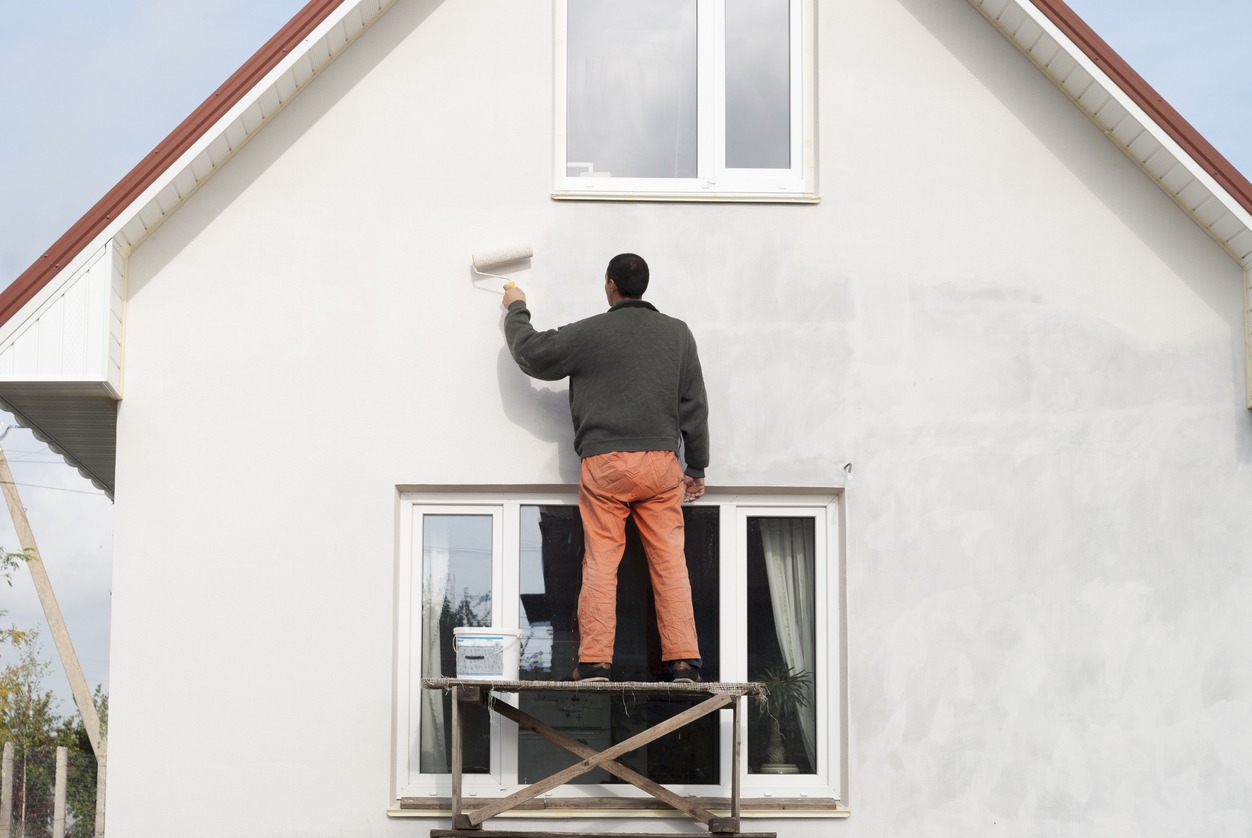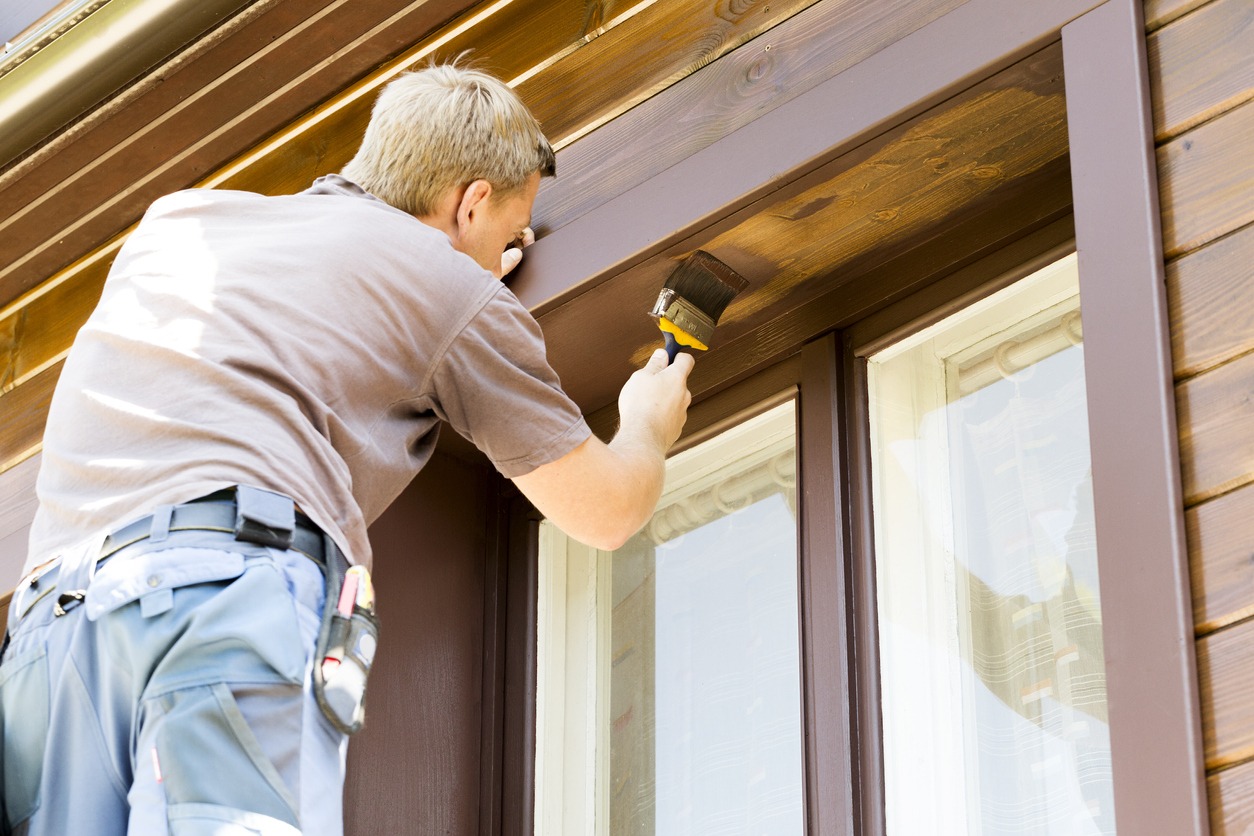Exterior house painting in Pleasanton is more than just a way to enhance the curb appeal of your home because it’s also a crucial part of maintaining and protecting your property. However, one question that often puzzles homeowners is, “How long does exterior house painting take?” The answer is not straightforward, as several variables come into play, making each project unique. This article aims to demystify the time frame for exterior house painting, providing homeowners with insights and expectations for their painting projects.
Understanding the duration of an exterior paint job is vital for effective planning and scheduling. It helps in allocating sufficient time for the project while ensuring minimal disruption to daily life. In the following sections, we will explore the various factors that influence the duration of an exterior house painting project, such as the size of the house, the condition of the exterior, weather conditions, and the painting process itself. Whether you’re considering a DIY project or hiring professionals, knowing what to expect can help you prepare better, ensuring a smooth and efficient painting experience.
Factors Influencing Painting Duration
The time it takes to complete an exterior house painting project can vary widely based on several key factors. Understanding these elements is crucial for setting realistic expectations and planning accordingly. Here are the primary factors that influence the duration of an exterior house painting job:
Size of the House
The larger the house, the longer the painting project will typically take. This includes not just the surface area of the walls but also the number of stories and architectural complexity. A house with multiple stories or hard-to-reach areas can add to the time required for painting due to the additional setup and safety measures needed.
Complexity of the Architecture
Homes with intricate trim, multiple gables, or decorative details require more time for careful and detailed painting. Also, different surfaces (wood, stucco, brick) may require different techniques and preparations, influencing the overall duration.
Condition of the Exterior
Time spent repairing damaged areas, such as rot, cracks, or peeling paint, must be factored in. The extent of these repairs can significantly impact the timeline. Essential tasks like cleaning, sanding, and priming can add to the project’s duration but are critical for a long-lasting paint job.
Weather and Climate Considerations
Exterior painting is weather-dependent. Rain, high humidity, and extreme temperatures can delay the start or progress of painting. The best weather conditions for painting – typically dry, mild temperatures – can speed up the process by facilitating faster drying and curing of paint.
Type of Paint and Number of Coats
Different types of paint (oil-based, latex) have varying drying times, which can affect the project timeline. The number of coats required, influenced by the paint color, previous color, and surface type, also plays a significant role in the duration.
Preparation Time
The preparation phase is a critical component of any exterior house painting project, often taking as much if not more, time than the actual painting. This stage sets the foundation for a high-quality, long-lasting paint job. Here’s a breakdown of the key steps in the preparation phase and the time they typically require:
1. Cleaning and Washing
Removing dirt, grime, and mildew from the house’s exterior is essential. Power washing is the most efficient method, usually taking a day for an average-sized home. The house then needs time to dry completely, which can take an additional day, depending on the weather and humidity levels.
2. Repairs and Sanding
Inspecting for and repairing any damaged areas, such as wood rot, cracks, or holes, is crucial. The time required for this step varies greatly depending on the extent of the damage. Smoothing out the surface, especially if there’s peeling or flaking paint, is necessary for a uniform finish. Sanding a typical house can take a day or two, but this can extend if extensive sanding is needed.
3. Taping and Covering
Applying painter’s tape around windows and doors and trimming to ensure clean edges can take several hours to a full day, depending on the house’s size and the number of windows and doors. Protecting plants, outdoor furniture, and light fixtures from paint splatters is also important. This usually doesn’t take very long but is a crucial step in the preparation process.
4. Primer Application (If Necessary)
If the project requires a primer, applying it and allowing for drying time is part of the preparation phase. This can add another day to the timeline, depending on the size of the house and weather conditions.
Painting Process
Once the preparation phase is complete, the actual painting process begins. This stage, while seemingly straightforward, involves several steps and considerations to ensure a high-quality finish. Here’s what the painting process typically entails:
1. Applying the Primer
If not already done in the preparation phase, applying a primer is the first step. This usually takes about a day, depending on the size of the house and the drying time of the primer.
2. Painting the Main Surfaces
The first coat of paint is applied to the main surfaces of the house. This can take a day or two, depending on the house’s size and the painting method (brush, roller, or spray). After the first coat, it’s essential to allow adequate time for the paint to dry. This can vary based on the paint type and weather conditions, typically requiring at least a few hours to a full day.
3. Applying Additional Coats
Depending on the paint type, color, and desired finish, one or more additional coats may be necessary. Each additional coat can add a day or more to the project timeline.
4. Painting Trim and Details
Trims, windowsills, door frames, and other details are painted last. This requires precision and can be time-consuming, often taking an additional day or two.
5. Touch-ups and Finishing Touches
After the main coats and detail work are done, it’s important to inspect the paint job and perform any necessary touch-ups. This step may take a few hours to a full day, depending on the size of the house and the number of touch-ups required.
6. Clean Up
Finally, cleaning up involves removing tape, coverings, and any paint splatters. The time required for clean-up varies but can typically be completed in a few hours.
Additional Time Considerations
In addition to the core stages of preparation and painting, there are other factors that can influence the overall timeline of an exterior house painting project. Being aware of these can help homeowners plan more effectively and set realistic expectations.
- Hiring Professionals vs. DIY: When hiring professionals, the job may be completed more quickly due to their expertise and access to better equipment. However, the scheduling and availability of the crew can impact the start date. Homeowners choosing to paint their houses themselves may take longer due to learning curves, limited manpower, and lack of professional-grade tools. However, they have more control over the scheduling.
- Inspection and Touch-ups: After the painting is done, it’s important to inspect the work. Identifying and correcting any missed spots or imperfections might add an extra day or more to the project. The paint may need additional time to cure fully, which doesn’t necessarily delay the project completion but is something to consider before resuming normal use of the space.
- Weather and Environmental Factors: Weather conditions can change unexpectedly and delay the painting process, especially in climates prone to rain or extreme temperatures. Certain times of the year may offer more favorable conditions for painting, thus reducing the risk of weather-related delays.
- Additional Features and Complexities: If the project includes painting detached garages, sheds, or other structures, this will extend the timeline. Specialized paint finishes or techniques, such as faux finishes, can take longer to apply than standard ones.
- Permitting and HOA Restrictions: In some areas, painting projects may require permits, especially in historic districts or specific communities, which can add to the timeline. If part of an HOA, approval for colors or certain types of paints may be necessary and can delay the start of the project.
Average Timelines
Providing average timelines for exterior house painting can help homeowners get a general idea of how long their project might take. It’s important to remember that these are rough estimates, and the actual time can vary based on the specific details and circumstances of each project. Here’s a breakdown based on different house sizes and conditions:
Small Houses (e.g., Bungalows, Small Single-Story Homes)
Preparation: 1-2 days for cleaning, minor repairs, and taping.
Painting: 1-3 days, depending on the number of coats and drying time.
Total Estimated Time: Approximately 2-5 days.
Medium-Sized Houses (e.g., Average Two-Story Home)
Preparation: 2-3 days for thorough cleaning, repairs, and priming.
Painting: 3-5 days, allowing time for multiple coats and detailed work.
Total Estimated Time: Approximately 5-8 days.
Large Houses (e.g., Large Two-Story or Three-Story Homes)
Preparation: 3-4 days for extensive cleaning, significant repairs, and extensive taping and covering.
Painting: 5-7 days or more, factoring in additional coats and complexity.
Total Estimated Time: Approximately 8-11 days or more.
These timelines are meant to serve as a basic guide. Each painting project is unique, and various factors, like the house’s condition, the painter’s skill level, and weather conditions, can significantly affect the duration of the project. Homeowners should use these estimates as a starting point and adjust expectations based on their specific situation and the factors discussed in the earlier sections.
Conclusion
Exterior house painting in Pleasanton is a significant undertaking that can dramatically enhance the appearance and protect the longevity of your home. However, understanding the time commitment involved is crucial for effective planning and execution. While average timelines provide a general guideline, each project is unique and may deviate from these estimates.
For homeowners, the key is to balance expectations with the realities of their specific situation. Weather delays, unexpected repairs, and other unforeseen challenges can extend the timeline, so it’s always wise to allow a buffer when planning. Consult only legitimate and professional painting contractors in Pleasanton and the surrounding areas for more useful painting tips and tricks.



